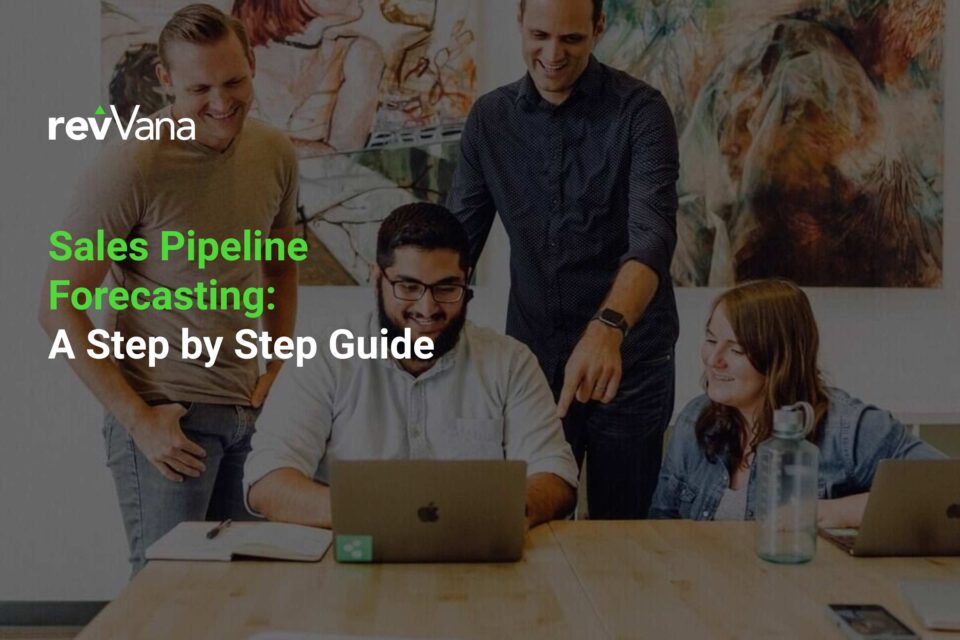

What Is Revenue Operations (RevOps) and Why Is It Important?
Learn about Revenue Operations (RevOps) as a strategy to align siloed revenue teams within B2B and B2C companies and unify revenue goals and targets.

Published on Saturday, October 12, 2019
Sales is the most important part of your business. As such, we’re sure you’re always looking for ways to improve sales. To do this, you need to measure current, past, and future sales accurately. This will give you the power to better understand and manage performance, and from there you can optimize your sales efforts.
With all of this said, we must note that sales pipeline forecasting plays a significant role in this process. In this article, we will take a deep dive into sales pipeline forecasting. We’ll tell you everything you need to know about it and give you instructions on how to go about it. Read on to find out more.
Before we get into it, let’s take care of the basics. Most importantly, the definition of sales pipeline forecasting (not to be confused with sales forecasting or revenue forecasting).
Essentially, it is the process of predicting how the future of your sales efforts will unfold and how your customers will behave. It involves taking data from your pipeline – including historical data, information about the deals underway, and data about current and prospective customers – and using it to determine what your future pipeline will look like.
For clarity here, your pipeline is an illustration of how customers move through your sales funnel. They make their way through the funnel by taking pre-determined actions, and this is represented in your CRM.
There are various levels of pipeline forecasting that you can do. The higher the level, the more accurate your forecast will be. For example, by using a combination of basic forecasting, and intelligent sales velocity modeling, you can broaden your predictions, and thus better both your understanding and the accuracy of the forecast. This is called enhanced pipeline forecasting.
Pipeline management is the process of controlling and analyzing all of a business’s sales opportunities as they move through the sales cycle. Here, you must understand what deals are in progress, and you must effectively come up with ways to get deals to the following step in the sales process.
As you can imagine, this is closely related to sales pipeline forecasting. However, they are not quite the same thing, although many people confuse the two ideas. Forecasting plays a role in management, it is a step in the process of figuring out how to move deals to the next level or deciding on which deals should take priority.
Though some of it may already be clear to you, let’s take a look at some of the reasons you need to do sales pipeline forecasting in your organization. Here are some of the best benefits that you can leverage:
Since a pipeline forecast can help you see what’s coming in the future, it makes it easier for managers and executives to set realistic goals and targets.
A clear and accurate view of your sales pipeline can drive your teams to hold themselves accountable for the work that they do. It shows them how much of their effort is paying off, or whether they are not putting enough effort into the process.
The sales pipeline forecast will show you where your organization stands in terms of customers, prospects, and sales. This means that you’ll be able to make better, more informed business decisions, and you will have an idea of how to strategize for the future, to optimize your growth. It can show you which opportunities you should take advantage of, or which areas you should be more careful about.
A healthy sales pipeline is a great way to convince investors to put money into your business. Investors want an idea of growth, scalability, current profit, potential profit, and so forth. A pipeline forecast can be a good source of information for this.

By now, we’re sure you’re ready to get down to the good stuff and do the work to optimize your sales. Below, we will detail how you can go about forecasting your pipeline so that you can get started as soon as possible.
Before you do anything else, you need to decide on a way to capture your pipeline. Many people make use of spreadsheets to do this, however, it is quite inefficient and as such is not recommended. A better option would be to use a CRM.
Once you have that sorted out, you need to define the stages of your sales cycle. This will help you to input data and information into the CRM, as rules will be applied consistently.
To accurately predict the pipeline, you may find that you need data on sales bookings or accounting revenue.
Sales bookings is the easy metric here. It is the list of opportunities you hope to take advantage of (on a specific date). Your CRM will have this information, so there won’t be much you have to do.
Accounting revenue, on the other hand, will be a little tougher. It is essentially how the bookings are recognized as income through time. This will not be captured by your CRM, so you will need to do a revenue forecast.
You can do this by looking at historic data in your CRM. If you do not have historic data, you’ll need to collect a few months of information first.
Thereafter, you must figure out your conversion rate at every step in your funnel. This shows you at which stage you lost each deal. Weightings allow you to ensure that you are not too optimistic or too negative in your forecast.
Now, you take the pipeline (including the bookings and revenue that you calculated earlier) and apply the weightings that you determined.
To elevate your forecast, and take it beyond the deals that are already in the pipeline to those that you aren’t even in contact with yet, you should consider a few additional factors.
By thinking about metrics like win rate, average deal size, number of deals, and other similar metrics, you can calculate the velocity of your sales team. This will give you insight into how future deals will enter your funnel and how to manage these deals.
To ensure that your forecast remains accurate, and thus useful to your business, you must always keep it up to date. This means you must repeat the forecasting process at least every few months.
This can take up a lot of time, but it will be worth it. And, if you’re using the right tools, like revVana for example, then it can be easy! revVana gives you the power to track and forecast sales commitments from complicated deal structures and automate the forecasting process.
In addition, revVana Insights lets you easily analyze, compare, or contrast your planned sales commitments against changes to those commitments, as well as other scenarios such as actual revenue, corporate budgets, and sales quotas. This will also help in pipeline forecasting.

A sales pipeline forecast can be massively beneficial to your organization and sales team. It can help you make better decisions, plan for the future, and much more. Its importance should not be understated. As such, you should begin forecasting today! It doesn’t have to be a difficult and tedious task. With the support of revVana, you can get it done easily. So, contact us today!